
The Battle of Bennington was a battle of the American Revolutionary War, part of the Saratoga campaign, that took place on August 16, 1777, in Walloomsac, New York, about 10 miles (16 km) from its namesake Bennington, Vermont. A rebel force of 2,000 men, primarily New Hampshire and Massachusetts militiamen, led by General John Stark, and reinforced by Vermont militiamen led by Colonel Seth Warner and members of the Green Mountain Boys, decisively defeated a detachment of General John Burgoyne's army led by Lieutenant Colonel Friedrich Baum, and supported by additional men under Lieutenant Colonel Heinrich von Breymann.
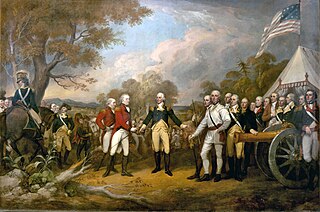
The Battles of Saratoga marked the climax of the Saratoga campaign, giving a decisive victory to the Americans over the British in the American Revolutionary War. British General John Burgoyne led a large invasion army southward from Canada in the Champlain Valley, hoping to meet a similar British force marching northward from New York City and another British force marching eastward from Lake Ontario; the southern and western forces never arrived, and Burgoyne was surrounded by American forces in upstate New York. He fought two small battles to break out which took place 18 days apart on the same ground, 9 miles (14 km) south of Saratoga, New York. They both failed.

General William Howe, 5th Viscount Howe, KB, PC was a British Army officer who rose to become Commander-in-Chief of British forces during the American War of Independence. Howe was one of three brothers who had distinguished military careers.

The Saratoga campaign in 1777 was an attempt by the British high command for North America to gain military control of the strategically important Hudson River valley during the American Revolutionary War. It ended in the surrender of the British army, which historian Edmund Morgan argues, "was a great turning point of the war, because it won for Americans the foreign assistance which was the last element needed for victory."
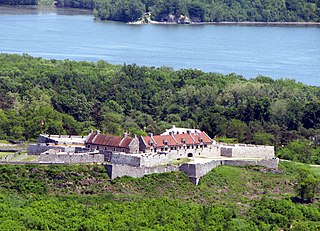
The 1777 Siege of Fort Ticonderoga occurred between 2 and 6 July 1777 at Fort Ticonderoga, near the southern end of Lake Champlain in the state of New York. Lieutenant General John Burgoyne's 8,000-man army occupied high ground above the fort, and nearly surrounded the defenses. These movements precipitated the occupying Continental Army, an under-strength force of 3,000 under the command of General Arthur St. Clair, to withdraw from Ticonderoga and the surrounding defenses. Some gunfire was exchanged, and there were some casualties, but there was no formal siege and no pitched battle. Burgoyne's army occupied Fort Ticonderoga and Mount Independence, the extensive fortifications on the Vermont side of the lake, without opposition on 6 July. Advance units pursued the retreating Americans.
Friedrich Baum (1727–1777) was a German dragoon Lieutenant Colonel of Brunswick in British service during the American Revolutionary War. Baum served under another German officier, Major General Friedrich Adolf Riedesel, commanding the Dragoon Regiment "Prinz Ludwig" of the Braunschweiger Jäger in support of General John Burgoyne's 1777 campaign to attack the Lake Champlain-Hudson River corridor, which ended in Burgoyne's surrender at Saratoga on October 15, 1777.
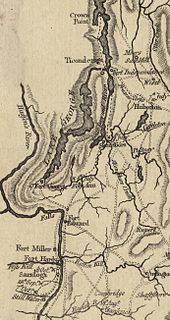
The Battle of Hubbardton was an engagement in the Saratoga campaign of the American Revolutionary War fought in the village of Hubbardton, Vermont. Vermont was then a disputed territory sometimes called the New Hampshire Grants, claimed by New York, New Hampshire, and the newly organized and not yet recognized but de facto independent government of Vermont. On the morning of July 7, 1777, British forces, under General Simon Fraser, caught up with the American rear guard of the forces retreating after the withdrawal from Fort Ticonderoga. It was the only battle in Vermont during the revolution.
Evans' Regiment of Militia also known as the 4th New Hampshire Militia Regiment was called up at Exeter, New Hampshire on September 8, 1777 as reinforcements for the Continental Army during the Saratoga Campaign. The regiment marched quickly to join the gathering forces of General Horatio Gates as he faced British General John Burgoyne in northern New York. The regiment served in General Ebenezer Learned's brigade of the Continental Army. With the surrender of Burgoyne's Army on October 17 the regiment was disbanded on December 15, 1777. The Regiment was called up again as part of Gen. John Sullivan's army at the unsuccessful Battle of Rhode Island in 1778.
Johnson's Regiment of Militia also known as the 4th Essex County Militia Regiment was first called up for the Siege of Boston and Bunker Hill in 1775. The regiment was called up a second time at Andover, Massachusetts on August 14, 1777 as reinforcements for the Continental Army during the Saratoga campaign. The regiment marched quickly to join the gathering forces of General Horatio Gates as he faced British General John Burgoyne in northern New York. The regiment served in General Warners' brigade and would capture six British cannon at the Battle of Bemis Heights. With the surrender of Burgoyne's Army on October 17, the regiment was disbanded on November 30, 1777.
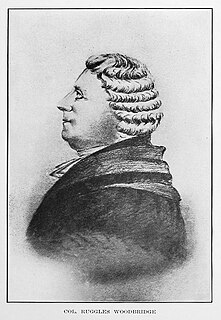
Woodbridge's Regiment of Militia, also known as the "1st Hampshire County Militia Regiment" and "Woodbridge's (25th) Regiment" and "The 25th Regiment of Foot". On April 20, 1775, the day immediately following the Battles of Lexington and Concord, Woodbridge's regiment was formed and marched to Cambridge, Massachusetts near Boston, and participated in the Siege of Boston and the Battle of Bunker Hill.
The Van Woert's Regiment of Militia, also known as the 16th Albany County Militia Regiment, was called up in July, 1777 at Hoosick, New York, United States to reinforce Gen. Horatio Gates's Continental Army during the Saratoga Campaign. The regiment served in Brigadier General Abraham Ten Broeck's Brigade. With the defeat of General John Burgoyne's British Army on October 17, 1777 the regiment stood down.
The Van Bergen's Regiment of Militia, also known as the 11th Albany County Militia Regiment, was called up in July, 1777 at Coxsackie, New York to reinforce General Horatio Gates's Continental Army during the Saratoga Campaign. The regiment served in Brigadier General Abraham Ten Broeck's Brigade. With the defeat of General John Burgoyne's British Army on October 17, 1777, the regiment stood down.
The Vandenbergh's Regiment of Militia, also known as the 5th Albany County Militia Regiment, was called up in July, 1777 at Rennselarwych, New York to reinforce Gen. Horatio Gates's Continental Army during the Saratoga Campaign. The regiment served in Brigadier General Abraham Ten Broeck's Brigade. With the defeat of General John Burgoyne's British Army on October 17, 1777 the regiment stood down.
The Van Ness' Regiment of Militia, also known as the 9th Albany County Militia Regiment, was called up in July, 1777 at Claverack, New York to reinforce Gen. Horatio Gates's Continental Army during the Saratoga Campaign. The regiment served in Brigadier General Abraham Ten Broeck's Brigade. With the defeat of General John Burgoyne's British Army on October 17, 1777 the regiment stood down.
The Van Schoonoven's Regiment of Militia, also known as the 12th Albany County Militia Regiment, was called up in July 1777 at Halfmoon, New York, to reinforce Gen. Horatio Gates's Continental Army during the Saratoga Campaign. The regiment served in Brigadier General Abraham Ten Broeck's brigade. With the defeat of General John Burgoyne's British Army on October 17, 1777, the regiment stood down.
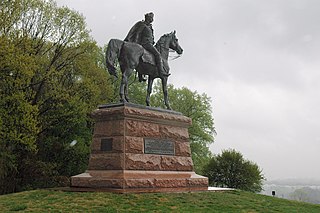
The Philadelphia campaign (1777–1778) was a British initiative in the American Revolutionary War to gain control of Philadelphia, which was then the seat of the Second Continental Congress. British General William Howe, after unsuccessfully attempting to draw the Continental Army under General George Washington into a battle in northern New Jersey, embarked his army on transports, and landed them at the northern end of Chesapeake Bay. From there, he advanced northward toward Philadelphia. Washington prepared defenses against Howe's movements at Brandywine Creek, but was flanked and beaten back in the Battle of Brandywine on September 11, 1777. After further skirmishes and maneuvers, Howe was able to enter and occupy Philadelphia. Washington then unsuccessfully attacked one of Howe's garrisons at Germantown before retreating to Valley Forge for the winter.

The Battle of Fort Anne, fought on July 8, 1777, was an engagement between Continental Army forces in retreat from Fort Ticonderoga and forward elements of John Burgoyne's much larger British army that had driven them from Ticonderoga, early in the Saratoga campaign of the American Revolutionary War.














